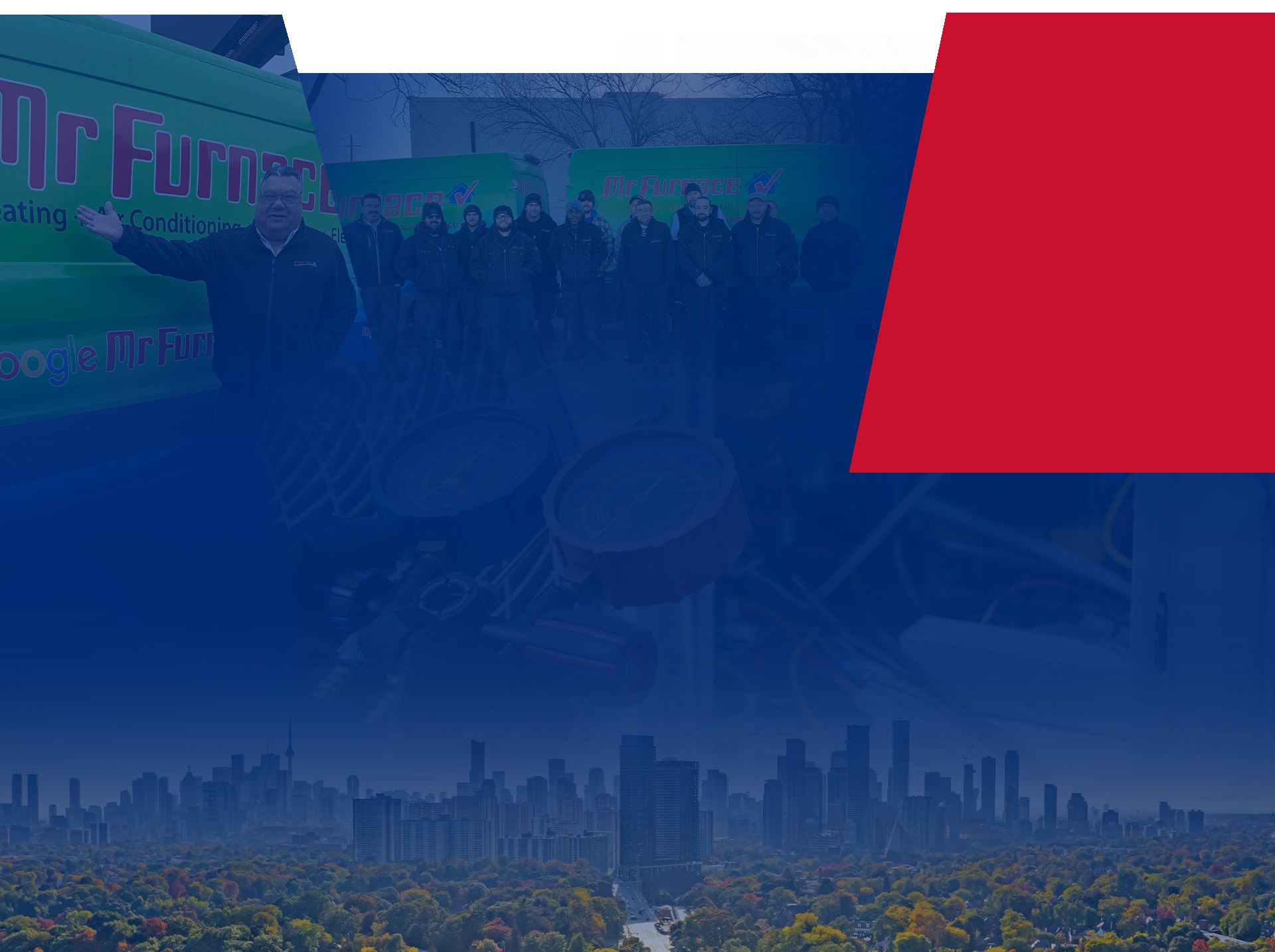How Does Forced Air Heating Work?
An Overview of Your System’s Parts & How They Work Together

Forced air heating is preferred by most Canadians when it comes to keeping our homes comfortable. Looking at the numbers, forced air heating is in the lead - and was almost twice as popular as the runner up.
So what makes forced air heating the go-to for Canadian homeowners?
- Affordability. Though the initial installation of your furnace may seem costly, having a furnace properly integrated into your home can save you money in many ways (as long as it is properly maintained). Forced air heating efficiently spreads heat throughout the home from a singular source - using less electricity than space heaters. Most thermostats provide precise temperature control, as well as time-settings to ensure your furnace is not running when heat is not needed.
- Fast heat distribution. A forced-air furnace ensures that your entire home is toasty within minutes.
- Air quality. Forced air furnaces come with filtration systems - and even humidifiers - to both heat and filter the air of your home. They’re also compatible with air conditioning systems in the summer months.
All in all, forced air heating provides more bang for your buck. Most other home heating systems lack in at least one of the above qualities, if not all.
How Forced Air Heating Systems Work
In a nutshell, forced air heating pulls in cold air, heats it, then pumps it back throughout your home via your ductwork. How the air is initially heated can vary, but we’ll cover the ins and outs of gas furnaces in this article.
Thermostat
The thermostat is the brains in this operation. It detects the ambient temperature of the home and sends signals via the electrical circuits to the furnace, instructing it when to turn on and off. The thermostat ensures that the furnace puts out the correct amount of heat. It also controls the temperature of the home.
Ducts
If the thermostat is the brain, the ductwork would be the veins. The ductwork of your home is comprised of both return and supply ducts. The return ducts bring cold air in from the house to be heated. The supply ducts - you guessed it - supply the heated air back throughout the home.
Hot Tip: To avoid inefficiencies, be sure to have your ducts inspected and even cleaned once every 5 years. If there is a blockage or leak somewhere in your ductwork, it could result in heat loss, or worse - your furnace breaking down.
Burners
Burners are the enclosed areas in which the fuel is ignited. When the thermostat calls for higher temperatures, these chambers open up, and fuel is burned to create heat. A flame sensor is a built-in safety for this mechanism. If the flame sensor does not detect a flame, it quickly shuts off the supply to prevent any gas from being released.
Heat Exchangers
The heat exchanger is where the magic happens. It’s made of metal tubing which holds the air and changes its temperature through radiant heat. A steady supply of cold air is drawn into the heat exchanger, which then heats it before distributing it throughout your home.
Blower Fan
The blower fan does the grunt work and is usually the best auditory cue that your furnace is working. You’ll hear the fan startup to get air moving when it’s time for the furnace to come on.
The blower fan cycles cold air in towards the heat exchanger then pushes the warm air out to the ducts. This is the part of the system that gives it its name: forced-air.
Flue
The flue vent is a crucial part of this system as it gets rid of the combustion gasses created when burning fuel. If it ever becomes clogged or begins leaking, you could have a serious safety risk on your hands. If this happens, turn off your furnace immediately and contact a professional.
Beyond The Basics
Now that you know the basic components of your forced-air system, here are a few more parts you should be familiar with.
Pilot Light
The pilot light is the flame that is always burning and ready to ignite the burners. It should always be burning blue - other colours indicate trouble. Newer furnaces may have an electric ignition instead of a pilot light.
Fan Limit Switch
This is the safety used to control how much the fan cycles. It’s the component responsible for turning the blower on and off, and will also shut the blower off automatically if it is overheating.
Thermocouple
This is a safety switch that turns off the gas supply if the pilot light goes off, or if the electric ignition malfunctions. Don’t mix it up with the flame sensor mentioned above - oftentimes these terms are used interchangeably, but they are not the same things.
The more you know and understand about your forced-air system, the better you can maintain it - and the sooner you’ll know what’s wrong if there’s a problem. If your furnace needs a bit of TLC, Mr. Furnace is always here to help.
Our Guarantees
*Cannot be combined with any other offer
× AccessPro Compliance Mission Statement
WCAG 2.2 Commitment: We strictly adhere to WCAG 2.2 AA guidelines.
Personalized UI: Users with disabilities can personalize the interface.
AI-Based Compliance: We use AI to maintain accessibility during updates.
ARIA Attributes: Meaningful data for screen-readers using ARIA attributes.
Optimized Screen Reader and Keyboard Navigation:
Screen-reader Optimization: ARIA attributes for meaningful data.
Image Description: Auto image descriptions for better understanding.
OCR Technology: Text extraction from images.
Keyboard Navigation: Enhanced keyboard operability.
Content-skip Menus: Easy navigation with shortcuts.
Popup Handling: Improved handling of popups.
Shortcuts: Quick access to key elements with shortcuts.
Specialized Profiles for Disabilities:
Epilepsy Safe Profile: Safe browsing with reduced triggers.
Vision Impaired Profile: Enhanced interface for visual impairments.
Cognitive Disability Profile: Assistive features for cognitive disabilities.
ADHD-Friendly Profile: Minimized distractions for ADHD users.
Blind Users Profile: Compatibility with popular screen-readers.
Keyboard Navigation Profile: Navigate with keyboard commands.
Customizable User Interface Adjustments:
Font Adjustments: Customize font settings for readability.
Colour Adjustments: Choose contrast profiles and color schemes.
Animations Disable animations for user safety.
Content Highlighting: Emphasize key elements.
Audio Muting: Instantly mute the website.
Cognitive Disorders: Linked search engine for better understanding.
Additional Functions: Various customizable options.
Browser and Assistive Technology Support:
Supported Browsers: Google Chrome, Mozilla Firefox, Apple Safari, Opera, Microsoft Edge.
Supported Screen Readers: JAWS (Windows/MAC), NVDA (Windows/MAC).
Continual Accessibility Improvement:
Ongoing Efforts: We continuously enhance accessibility.
Goal: Achieve maximum accessibility with evolving technology.
: Reach out via the website’s contact form for queries or concerns.







